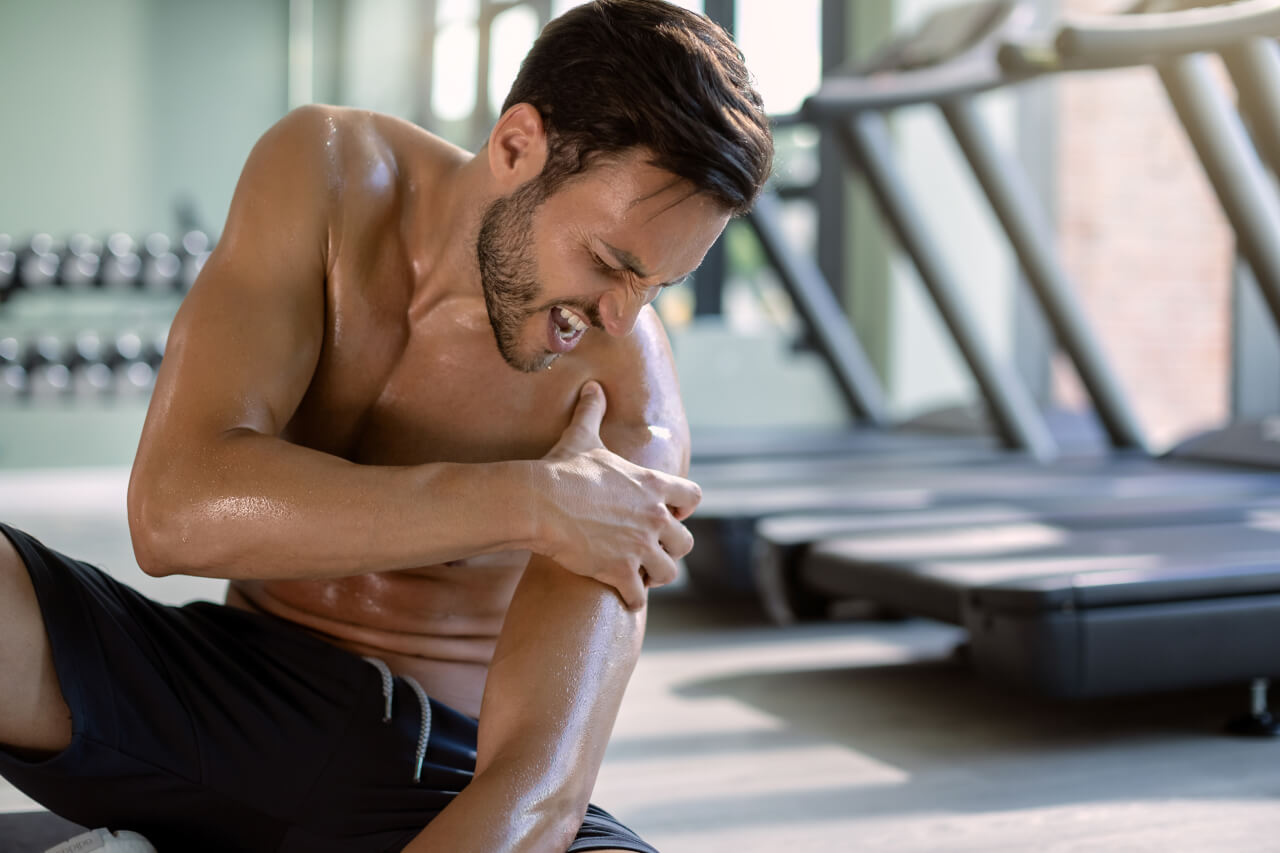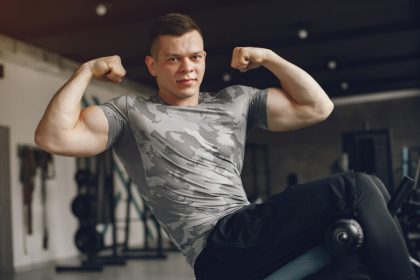Have you ever felt a sudden and involuntary contraction of a part of your muscle, like a twitch or a flutter?
Or have you ever experienced a prolonged and painful contraction of your entire muscle, like a knot or a cramp?
If you have, then you have experienced muscle spasms and cramps, two common muscle disorders that affect millions of people around the world.
But what are the differences between muscle spasms and cramps, and how can you prevent and treat them?
Having trouble differentiating between muscle spasms and muscle cramps? It’s a common misconception, as the terms are frequently used interchangeably.
Muscle spasms and cramps are two terms that are often used interchangeably, but they are not the same thing.
While both involve involuntary muscle contractions, they have different causes, symptoms, duration, and treatment.
Knowing the difference between muscle spasms and cramps can help you identify the root cause of your muscle problem and find the best solution for it.
If you are an active person, you have probably experienced muscle spasms and cramps at some point in your life.
They are both unpleasant and uncomfortable sensations that can interfere with your daily activities and performance. But do you know what causes them, and how to tell them apart?
Muscle spasms and cramps are not the same thing, and they require different approaches to prevent and treat them.
In this blog post, we will show you the five core differences between muscle spasms and cramps, and help you learn how to deal with them in the best way possible.
What are Muscle Spasms?
A muscle spasm is an involuntary, sudden contraction of a muscle or group of muscles.
It is often caused by an irritation or injury to the muscle or nerve that controls it.
Muscle spasms can occur in any muscle in the body, but they are most common in the back, neck, and legs.
A muscle spasm is a sudden and involuntary contraction of a part of a muscle, usually caused by nerve malfunction, muscle fatigue, dehydration, electrolyte imbalance, muscle injury, or underlying medical conditions.
Muscle spasms are usually not painful, but they can feel like a twitch or a flutter in the muscle.
They typically last for a few seconds or minutes, and can occur in any muscle of the body, such as the eyelid, neck, back, calf, or foot.
Symptoms of Muscle Spasms
The most common symptom of a muscle spasm is pain.
The pain may be sharp, stabbing, or dull. It may also feel like the muscle is tight or knotted. Other symptoms of muscle spasms may include:
- Muscle twitching
- Muscle weakness
- Difficulty moving the affected muscle
- Limited range of motion
What are Muscle Cramps:
A muscle cramp is a prolonged and painful contraction of an entire muscle, usually caused by sustained muscle exertion, dehydration, electrolyte imbalance, muscle injury, or certain medications.
Muscle cramps are very painful and can cause intense discomfort and stiffness in the affected muscle.
They can last for several minutes or hours, and can cause soreness and inflammation that persist for days after the episode.
Muscle cramps can occur in any muscle of the body, but they are more common in the legs, especially the calf, hamstring, and quadriceps.
Symptoms of Muscle Cramps
The main symptom of a muscle cramp is pain.
The pain is often described as a tight, squeezing, or aching sensation.
The affected muscle may also feel hard or knotted. Muscle cramps can last for a few seconds or several minutes.
5 Core Differences Between Muscle Spasms and Cramps
- Difference #1: Pain:
One of the most obvious differences between muscle spasms and cramps is the level of pain they cause.
Muscle spasms are usually not painful, but they can feel like a twitch or a flutter in the muscle.
Muscle cramps are very painful and can cause intense discomfort and stiffness in the affected muscle.
The pain can be so severe that it can interfere with your daily activities and performance, and make you unable to move or relax the muscle.
- Difference #2: Duration:
Another difference between muscle spasms and cramps is the duration of the contraction.
Muscle spasms typically last for a few seconds or minutes, and then disappear on their own.
Muscle cramps can last for several minutes or hours, and can be hard to get rid of.
Muscle cramps can also cause soreness and inflammation that persist for days after the episode, making the muscle more prone to future cramps.
- Difference #3: Causes:
Muscle spasms and cramps can have different causes, depending on the type and location of the muscle involved.
Muscle spasms can be caused by nerve malfunction, muscle fatigue, dehydration, electrolyte imbalance, muscle injury, or underlying medical conditions, such as multiple sclerosis, Parkinson’s disease, dystonia, or restless legs syndrome.
Muscle cramps can be caused by sustained muscle exertion, dehydration, electrolyte imbalance, muscle injury, or certain medications, such as diuretics, statins, or beta blockers.
Some factors that can increase the risk of muscle spasms and cramps are age, pregnancy, diabetes, kidney disease, thyroid disease, alcohol consumption, and poor circulation.
- Difference #4: Prevention:
Muscle spasms and cramps can be prevented by staying hydrated, replenishing electrolytes, stretching before and after exercise, warming up properly, avoiding overexertion, and treating any muscle injuries or medical conditions.
- Drinking enough water and fluids, especially during hot weather and intense physical activity, can help prevent dehydration and electrolyte imbalance, which are common triggers of muscle spasms and cramps.
- Eating foods rich in potassium, magnesium, calcium, and sodium, such as bananas, avocados, nuts, seeds, dairy products, and salt, can also help maintain the proper balance of minerals in the body and prevent muscle spasms and cramps.
- Stretching before and after exercise can help loosen and relax the muscles, and prevent them from tightening and contracting involuntarily.
- Warming up properly can help prepare the muscles for the activity and prevent them from getting fatigued and injured.
- Avoiding overexertion and taking breaks can help prevent muscle spasms and cramps caused by sustained muscle exertion. Treating any muscle injuries or medical conditions that may cause muscle spasms and cramps can also help prevent them from recurring.
- Difference #5: Treatment:
Muscle spasms can be treated by applying heat or cold, massaging the muscle, stretching the muscle, taking painkillers, or using muscle relaxants.
However, muscle cramps may require more intensive and longer treatment than muscle spasms, depending on the severity and frequency of the episodes.
Massaging the muscle can help relax the muscle and release the tension and pressure.
When to Seek Medical Attention
If you are experiencing muscle spasms or cramps that are severe, frequent, or do not improve with home treatment, it is important to see a doctor to rule out any underlying medical conditions.
Home Remedies
Here’s a guide to natural solutions that your readers can readily incorporate into their routine:
- Hydration:
- Dehydration is a common trigger for muscle spasms and cramps. Encourage regular water intake throughout the day to maintain proper hydration levels.
- Consider incorporating electrolyte-rich drinks, such as coconut water, to replenish essential minerals lost during physical activity.
- Stretching Exercises:
- Gentle stretching exercises can help prevent and alleviate muscle spasms and cramps.
- Focus on stretching the specific muscle groups prone to spasms. Incorporate activities like yoga or Pilates into your routine for overall muscle flexibility.
- Heat and Cold Therapy:
- Apply heat packs to the affected area to relax tight muscles and improve blood circulation.
- Alternatively, cold compresses can help reduce inflammation and numb the area, providing relief from pain associated with cramps.
- Magnesium-Rich Foods:
- Magnesium deficiency is linked to muscle cramps. Include magnesium-rich foods in your diet, such as leafy greens, nuts, seeds, and whole grains.
- Consider magnesium supplements under the guidance of a healthcare professional if dietary intake is insufficient.
- Bananas and Potassium:
- Bananas are a great source of potassium, a mineral essential for muscle function. Potassium helps regulate muscle contractions and can prevent cramps.
- Incorporate potassium-rich foods like bananas, oranges, and potatoes into your diet.
- Epsom Salt Baths:
- Soaking in a warm bath with Epsom salts can help relax muscles and alleviate spasms.
- The magnesium in Epsom salts is absorbed through the skin, providing a double benefit for muscle health.
- Anti-Inflammatory Foods:
- Include anti-inflammatory foods in your diet to reduce muscle inflammation and pain.
- Turmeric, ginger, and fatty fish (rich in omega-3 fatty acids) are known for their anti-inflammatory properties.
- Stay Active:
- Regular physical activity helps prevent muscle spasms and cramps by promoting blood circulation and muscle flexibility.
- Incorporate moderate exercise into your routine, such as walking, swimming, or cycling.
- Rest and Recovery:
- Ensure adequate rest and recovery time after intense physical activity to allow muscles to recuperate.
- Prioritize a good night’s sleep, as sleep deprivation can contribute to muscle spasms.
- Apple Cider Vinegar:
- Some people find relief from muscle cramps by consuming a mixture of apple cider vinegar and honey in warm water.
- The acidity and potassium content in apple cider vinegar may help alleviate cramps.
Fitness and Muscle Health
Exercising with muscle cramps and spasms requires a gentle and strategic approach to avoid exacerbating the discomfort.
Here’s a detailed guide on how to exercise when dealing with these issues and specific exercises that may provide relief:
Consult with a Healthcare Professional:
Importance: Before starting any exercise regimen, consult with a healthcare professional, especially if your muscle cramps and spasms are persistent or associated with an underlying health condition.
Choose Low-Impact Activities:
Importance: Low-impact exercises are less likely to strain muscles and joints, reducing the risk of triggering or worsening muscle cramps and spasms.
Recommended Activities:
-
- Swimming or water aerobics: Buoyancy reduces impact on joints.
- Cycling: Gentle on muscles and joints.
- Walking: A low-impact cardiovascular exercise.
Stretching Exercises:
Importance: Stretching helps improve flexibility and can alleviate muscle tightness associated with spasms and cramps.
Recommended Stretches:
-
- Gentle neck stretches: Slowly tilt your head side to side and forward and backward.
- Calf stretches: Stand facing a wall, place one foot forward, and lean into the wall, keeping your back leg straight.
- Quadriceps stretches: While standing, bring one foot towards your buttocks and hold your ankle.
Yoga:
Importance: Yoga promotes flexibility, strength, and relaxation, making it beneficial for individuals with muscle cramps and spasms.
Recommended Poses:
-
- Child’s Pose: Kneel on the floor, sit back on your heels, and extend your arms forward.
- Cat-Cow Stretch: On your hands and knees, alternate between arching and rounding your back.
Breathing Exercises:
Importance: Deep breathing exercises can help relax the body and reduce muscle tension.
Recommended Techniques: Diaphragmatic breathing: Inhale deeply through your nose, expanding your diaphragm, and exhale slowly through your mouth.
Gradual Strength Training:
Importance: Strengthening muscles can help prevent future cramps, but start with light resistance and gradually increase.
Recommended Exercises:
-
- Leg lifts: While lying on your back, lift one leg at a time, keeping it straight.
- Seated leg lifts: Sit on a chair and extend one leg at a time, holding for a few seconds.
Hydration and Nutrition:
Importance: Dehydration and nutrient deficiencies can contribute to muscle cramps. Ensure you stay hydrated and maintain a balanced diet.
Recommended Actions:
-
- Consume electrolyte-rich drinks during and after exercise.
- Include foods rich in potassium and magnesium, such as bananas, leafy greens, and nuts.
Modify Intensity and Duration:
Importance: Pay attention to your body’s signals and modify the intensity and duration of your exercises accordingly.
Recommended Actions:
-
- Shorten exercise sessions initially and gradually increase as your muscles adapt.
- Opt for lower intensity workouts and focus on consistency.
Cooling Techniques:
Importance: Applying cold compresses or ice packs after exercise can help reduce inflammation and soothe muscles.
Recommended Actions: Apply an ice pack wrapped in a thin cloth to the affected areas for 15-20 minutes.
Listen to Your Body:
Importance: If you experience increased pain or discomfort during exercise, stop immediately and reassess.
Recommended Actions: Rest and allow your muscles time to recover before attempting exercise again.
Always prioritize your comfort and well-being when exercising with muscle cramps and spasms.
If symptoms persist or worsen, seek guidance from a healthcare professional to address any underlying issues.
Conclusion
In conclusion, navigating the realms of muscle spasms and cramps reveals a nuanced landscape where these seemingly interchangeable terms unfold into distinct entities.
Understanding the five core differences—defining the terms, exploring duration and intensity, unraveling causes and triggers, probing into associated conditions, and deciphering treatment approaches—empowers individuals to discern and address these muscle-related issues effectively.
Armed with this knowledge, readers can embark on a journey of self-awareness, recognizing the unique characteristics of muscle spasms and cramps.
This newfound understanding not only aids in identifying the specific nature of discomfort but also guides individuals towards tailored prevention and relief strategies.
As we unravel the intricacies of muscle health, may this knowledge serve as a compass, steering us away from confusion and towards a path of informed well-being.
Embracing the differences allows us to appreciate the diverse aspects of our bodies, fostering a proactive approach to muscle care and, ultimately, a life less interrupted by spasms and cramps.
FAQs
What’s the main difference between muscle spasms and muscle cramps?
While the terms are often used interchangeably, muscle spasms involve sudden, involuntary contractions of muscles, often with temporary tightening.
Muscle cramps, on the other hand, are characterized by intense pain caused by a muscle contracting and refusing to relax.
How long do muscle spasms and cramps typically last?
Muscle spasms are usually brief, lasting seconds to minutes.
In contrast, muscle cramps can persist for a more extended period, ranging from several minutes to hours.
Can dehydration contribute to muscle spasms and cramps?
Yes, dehydration is a common trigger for both muscle spasms and cramps. Ensuring proper hydration is crucial in preventing these issues.
Are there specific exercises that can help prevent muscle spasms and cramps?
Yes, incorporating activities like gentle stretching, low-impact exercises (such as swimming or walking), and strength training with proper form can aid in preventing muscle spasms and cramps.
What should I do if I experience muscle spasms or cramps during exercise?
Stop exercising immediately if you experience increased pain or discomfort.
Practice gentle stretching, stay hydrated, and consider applying heat or cold packs as needed.
If issues persist, consult with a healthcare professional.
Are there associated conditions linked to muscle spasms and cramps?
Yes, muscle spasms can be associated with conditions like multiple sclerosis, while muscle cramps may be a symptom of underlying issues such as diabetes or thyroid disorders.





